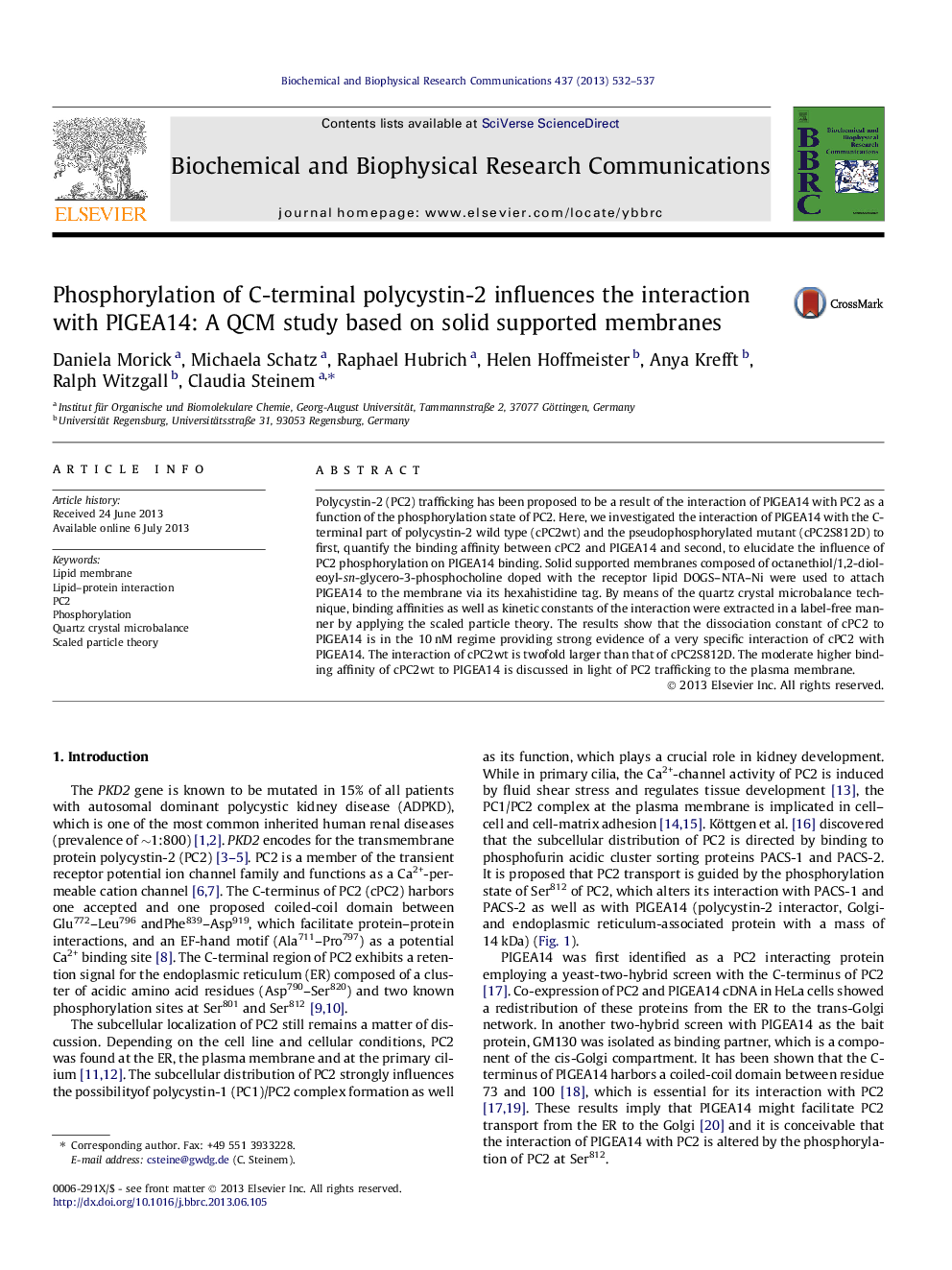| Article ID | Journal | Published Year | Pages | File Type |
|---|---|---|---|---|
| 10758547 | Biochemical and Biophysical Research Communications | 2013 | 6 Pages |
Abstract
Polycystin-2 (PC2) trafficking has been proposed to be a result of the interaction of PIGEA14 with PC2 as a function of the phosphorylation state of PC2. Here, we investigated the interaction of PIGEA14 with the C-terminal part of polycystin-2 wild type (cPC2wt) and the pseudophosphorylated mutant (cPC2S812D) to first, quantify the binding affinity between cPC2 and PIGEA14 and second, to elucidate the influence of PC2 phosphorylation on PIGEA14 binding. Solid supported membranes composed of octanethiol/1,2-dioleoyl-sn-glycero-3-phosphocholine doped with the receptor lipid DOGS-NTA-Ni were used to attach PIGEA14 to the membrane via its hexahistidine tag. By means of the quartz crystal microbalance technique, binding affinities as well as kinetic constants of the interaction were extracted in a label-free manner by applying the scaled particle theory. The results show that the dissociation constant of cPC2 to PIGEA14 is in the 10Â nM regime providing strong evidence of a very specific interaction of cPC2 with PIGEA14. The interaction of cPC2wt is twofold larger than that of cPC2S812D. The moderate higher binding affinity of cPC2wt to PIGEA14 is discussed in light of PC2 trafficking to the plasma membrane.
Keywords
Related Topics
Life Sciences
Biochemistry, Genetics and Molecular Biology
Biochemistry
Authors
Daniela Morick, Michaela Schatz, Raphael Hubrich, Helen Hoffmeister, Anya Krefft, Ralph Witzgall, Claudia Steinem,
